Introduction
The Luftwaffe performed admirably in the blitzkrieg attacks on Poland and France campaign. But the Luftwaffe first defeat took place during the Battle of Britain, where it was unable to wrest control of the sky from the Royal Air Force.
As war progressed, and after USSR Invasion and the declaration of war to USA ,War change face and in 1943 and 1944 Germany was devastated by massive Allied bombing attacks. Not enough resources were committed to the defense of Germanys cities, as Hitler became preoccupied with the struggle against the Soviet Union, and his desire to develop terror weapons (V weapons) to defeat Britain.
Despite the leaders strategic errors, Luftwaffe developed most advanced aircrafs like Me262 jet and the tail-less, rocket-powered Me163 Komet, this two aircrafts were probably the most technically advanced aircrafts of WW2.
History
Out of necessity German aircraft designers compressed decades of development time into months. Although it did not play a significant role in combat, the 163 represented a radical departure from conventional aircraft design. With a length of only 5.79m, the Me 163 was powered by a liquid fuel rocket engine.
The production models of the Komet were fueled with a mixture of C-Stoff (a mixture of 57% methyl alcohol, 13% hydrazine hydrate, and 13% water) and T-Stoff which was 80% hydrogen peroxide.
Almost 2.22 ton of fuel were carried, but the Comets engine had a burn time of only a few minutes. so Komet was also not particularly effective in combat despite its 596-MPH top speed and twin canon. The aircraft had only about 150 seconds of power once it reached altitude. Thereafter it became a very fast glider. Many technological breakthroughs were required for the Komet program to succeed A subsequent modification partially fixed this Because space and weight were so critical, use of a conventional landing gear was not possible ! Why ?,
Aircraft had to be as light as possible to take advantage of its limited fuel load weight penalty prevent a retractable landing gear Instead the Me 163 utilize a a two-wheel dolly consisting of an axle and two wheels that was jettisoned on take-off For landing Me 163 utilize a sturdy retractable skid with hydraulic shock absorbers beneath the forward fuselage plus the rear landing wheel. This method caused problems however as take-offs had to be directly into the wind and if a concrete runway was being used and a crosswind was present, the aircraft would not stay straight below the speed at which the rudder became operational.
Allied pilots learned to exploit the Me163s vulnerability during landing as upon Me 262 . Rudolf Opitz, the Chief Test Pilot on the Me163, save Me 163 to preserve this unique aircraft for aviation posterity.
The Me 163 Komet was perhaps the most unique aircraft design of WW2
German scientists, always on the cutting edge of evolving war technology, developed a rocket-powered aircraft based on testing completed with an engine-less glider design. The resulting research produced the one-man, swept back fighter that was equally dangerous to pilot and Allied bomber formations alike.
The Beginning
The Me 163 found his origin in a design of in1939.
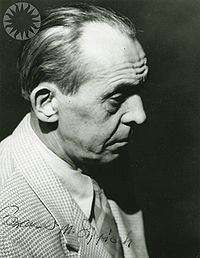 |
| Lippish (1894 1976) |
All begin with the Lippisch designs Glider was progressively developed and eventually fitted with an 8hp engine coupled with a pusher propeller, becoming the Storch V, making its first powered flight on September 17th 1929 Lippisch was always keen on the delta-wing configuration The newest glider, known as the Delta I, began flying in the summer of 1930 and was later fitted with a 30hp engine to fly at speed of up to 145kph in early 1931.
In 1932, Lippisch work with Focke-Wulf and collaborating with Fieseler on Delta III and the following year saw him move to DFS at Darmstadt where work continued on both the Delta III and IV.
Design to the Delta IV a so it became the Delta IV b and received the RLM designation DFS39 (Deutsche Forschungsanstalt für Segelflug, or German Research Institute for Sailplane Flight) and used purely as a glider tested of the airframe.
This DFS was formed in 1933 to centralize all gliding activity in Germany and after the arrival of Hitler at the power DFS was involved in producing training sailplanes for Hitler Youth and Luftwaffe as well as conducting research into advanced technologies such as flying wing and rocket propulsion.
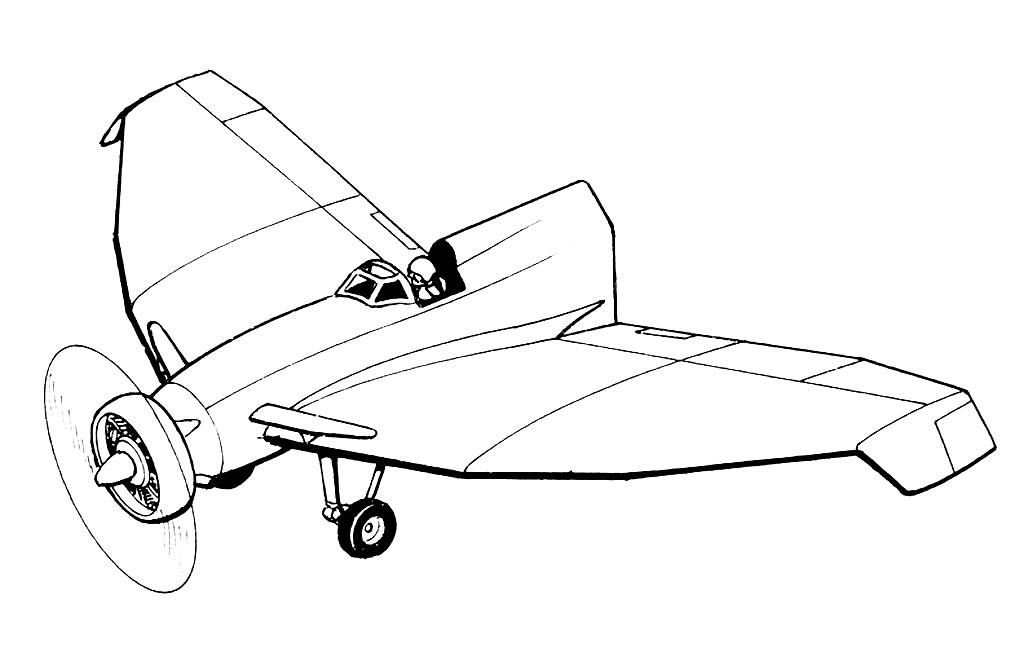 |
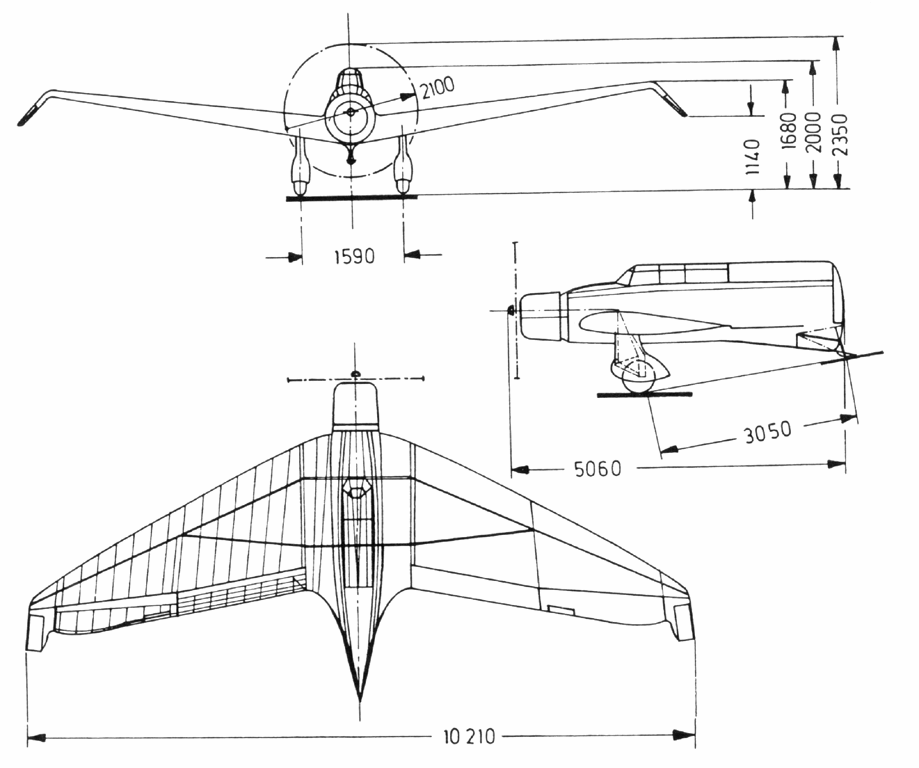 |
| DSF 39 |
DSF39 |
The DFS 194 was based on another Lippisch Delta series of tail-less designs. As originally conceived, it would have been a tail-less aircraft similar to his DFS 40, powered by a conventional piston engine driving a pusher propeller. The airframe was completed in this configuration in March 1938. This tail less aircraft are best basis for a rocket-powered fighter and the Reichlutfahrtministerium( RLM) was interested
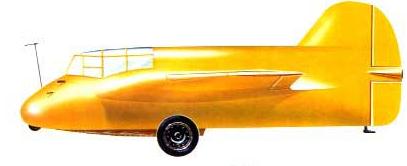 |
| DFS 194 |
On January 2nd 1939 Messerschmitt take over Lippisch and his team in Messerschmitt AG, Augsburg in order to work upon the Project X where DFS was to build the wing and Ernst Heinkel AG were to build the remainder of the airframe . in the same time Ernst Heinkel AG develop their own rocket aircraft, the He176. But RLM had already selected the DFS39 for conversion to rocket power and stipulated a modest 350kph top speed
Following the researches Dr. Alexander Lippisch adapt a Walter rocket motor R I 203 in the DFS 194 glider and by October 1939, the aircraft was undergoing engine tests at Peenemunde
The Walter rocket motor use a volatile but explosive combination of two substances known simply as T-Stoff and Z-Stoff,
the aircraft could utilized the chemical reactive explosion in a controlled environment to be propelled These were followed by glide tests towed behind a Bf110, to test its flying characteristic
In early 1940 leading to the first powered flight in August The flight went exceedingly well, the plane attaining a top speed of 550 km/h with performance much superior to the more basic HE 176 who had been tested in July 20th 1939 with an earlier Walter rocket engine.
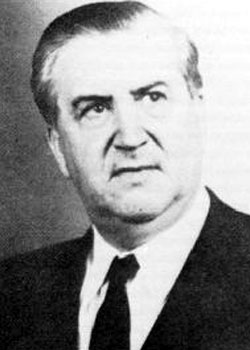 |
 |
| Walter (1900 1980 ) |
Logo Walter |
In the summer of 1941, two prototypes were taken to Peenemunde for powered trials using the new Walter HWK RII-203b rocket motor that gave out 750kg of thrust, propelling the Me163 to 885kph but only a small amount of fuel could be carried
Little after and during a short moment the test pilot Heini Dittmar was towed to a height of 4,000m and after casting off, accelerated to a speed of 1003.9kph before suffering a loss of stability due to compressibility effects it his the phenomen well known in later years as aircraft approached the speed of sound
Another problem is the instability of the fuel This fuel was in fact a little bomb because it is instable
He was composed by 80 % of hydrogen peroxide with oxyquinoline or phosphate (T-Stoff) and an aqueous solution of calcium permanganate (Z-Stoff). An imbalance in this fuel mixture could lead to instability in the combustion chamber and lead to an explosion . A replacement for Z-Stoff using a different catalyst was developed (30% hydrazine hydrate solution in methanol) called C-Stoff, for use in the Walter RII-211,
He equipped the Me 163 and he was designated as Walter HWK 109-509A.
Description
Externally it appears to be an airplane construction rudimentary but in fact it is a very complex aircraft.
The sail is simple and slightly smaller than the prototypes The wings show a slender spire 23.3 ° they are timber lined with thick plywood of 8 mm mounting on canvas.
Two stringers widely spaced control the roll and depth. The lower part of the wing has flaps that are cut down for landings. The fuselage small is built in light alloy . He have numerous inspection traps giving access to various equipment.
In the interior of the fuselage the 1040 liters T Stoff tank is housed between the cockpit and the engine. Two other smaller ones are on the side of the cockpit.
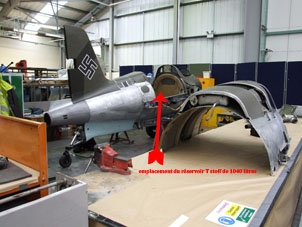 |
| Tank Location Source Internet |
C Stoff fuel is contained in two containers of 173 liters in the spars of the wing and two other tanks smaller 73 l in the leading edge of the wings.
The propeller HWK. A 509 type 1 has a unique combustion chamber fueled by long narrow pipes from the turbo located at the edge of the wings. Before each flight should clear all the piping with water
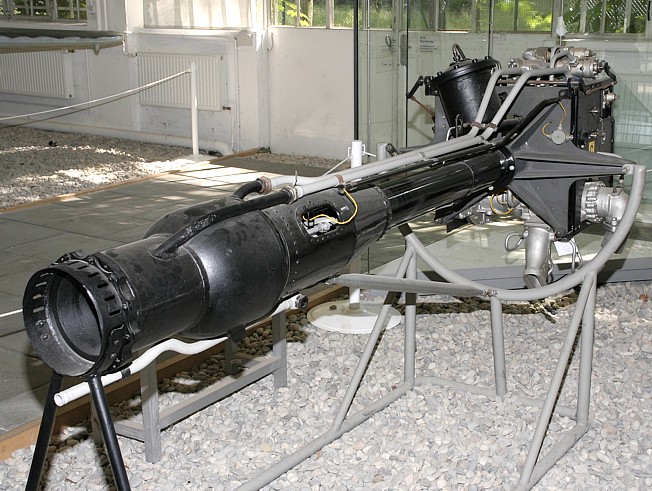 |
.jpg) |
| Engine HWK A509 type 1 |
Engine HWK A509 type 1 |
The engine started with T Stoff powered by electric motors that launch the turbo pumps. The tank is pressurized as soon as the liquid was sent in turbo pumps they were run to the combustion chamber at a pressure of 8 kg The total power is of 1500 kg but it could go to high altitudes up to 1700 kg. The engine was extinguished, however, whether the pressure fell to 100 kg of pressure
The cockpit was comfortable and pressurized The canopy was in Plexiglas hinged on the right side but it was fragile impacts as birds or hailstone
| 1 |
five position throttle |
8 |
turbine tachometer |
| 2 |
T stoff consumption gauge |
9 |
altimeter |
| 3 |
engine gauge |
10 |
under carriage extention retraction |
| 4 |
rate of clim indicator |
11 |
master engine arming |
| 5 |
turn and back indicator |
12 |
90mm armor glass |
| 6 |
air speed indicator |
13 |
oil pressure gauge |
| 7 |
engine pressure gauge |
14 15 |
aiming (14)
undercarriage indicator ligths( 15) |
The cockpit was protected by two plates of armor to the front and the rear seat of the pilot who was not ejected. Anyway it was very difficult to evacuate the aircraft at high speed.
.jpg) |
.jpg) |
 |
| Dolly |
Dolly and Skate |
Tail Wheel |
The armament was originally composed of 2 guns of 20 mm MG 551 to be replaced later by M K. 58 of 30 mm shells with 60 in reserve. The skate landing and the tail wheel retract during the take of and the trolley take down
This aircraft would be piloted by a single crewman and featured swept-back wings (a major wartime development in itself) and a single rudder plane at rear.
The aircraft proved to have excellent flying characteristics, and proved safe to fly at nearly twice the anticipated speed.
The Me 163 would take off through the use of a dolly which was jettisoned upon take-off, fly to the required attack altitude and swoop down onto oncoming and unsuspecting bomber formations. Landing was accomplished by utilization of a single centerline skid, to which added even more lethality to the pilot himself upon landings
These excellent results paved the way for the next stage of the project, which now received priority status from the RLM. In 1941the Me 163 born He was a new aircraft but with a refined design along the DFS 194
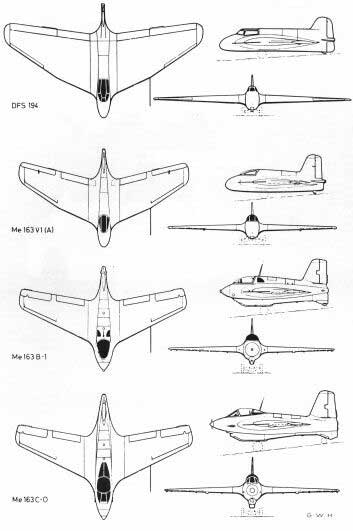 |
| From DFS 194 to Me 163 |
The Me 163 A
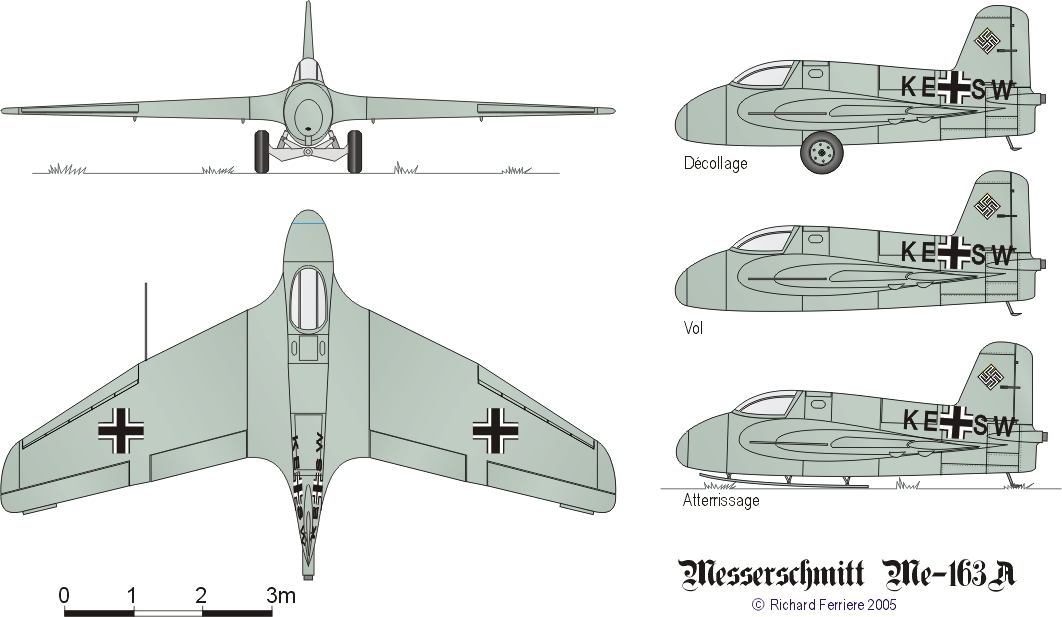 |
| Source Internet |
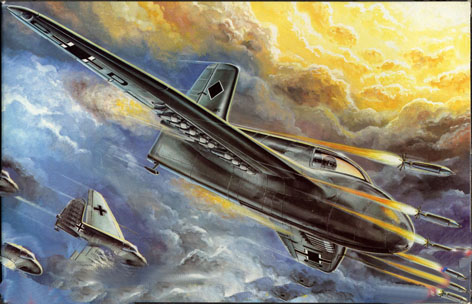 |
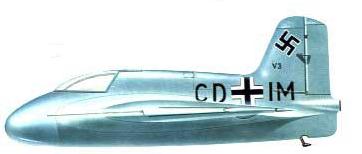 |
| Me 163 A (not reality) |
Me 163 A |
Production of a prototype series started in early 1941, known as the Me 163. Secrecy was such that the number, Bf163 was for a project for small two-passenger light plane which had to succeed to to the Fieseler Fi 156 so intelligence services would conclude what the number would be for this earlier design.
Messerschmitt receiving an order for a batch of ten Me163A-0 aircraft built by Wolf Hirth, the sailplane company, and the aircraft were used as training gliders Me163A
The Me 163 A V4 was shipped to Peenemunde and in May 1941 he receive the HWK RII-203 engine
On October 2nd 1941 this Me 163 A V4( code KE+SW, or Stammkennzeichen, ) set a new world speed record at 1004.5 km/h and on July 6th 1944 the Me 163 B V18 (VA+SP) set a new world speed record at1,130 km/h
He would be wait on August 20th 1947 to see this world record surpassed by the US Douglas Skystreak a turbojet-powered research aircraft followed in November 6th by the flight of the Bell X 1 de Chuck Yeager with 1434 km/h speed, recorded at an altitude of nearly 14.82 km
Five prototype Me 163 A-series(Anton) experimental V aircraft were built, adding to the original DFS 194 (V1), followed by eight pre-production examples designated Me 163 A/0
During test the jettison able main landing gear arrangement proved to be a serious problem because when the wheels rebounded she could be damaged during the take off the aircraft. Another problem After the flight Me 163(7.5 minutes of flightime) would rise back into the air with the slightest updraft. Since the approach was made unpowered, there was no opportunity to make another landing pass if the aircraft failed to stop at the proper airfield and during the landing the pilot was unable to avoid obstacles because aircraft lacked steering or braking control
For production models, a set of landing flaps allowed somewhat more controlled landings.
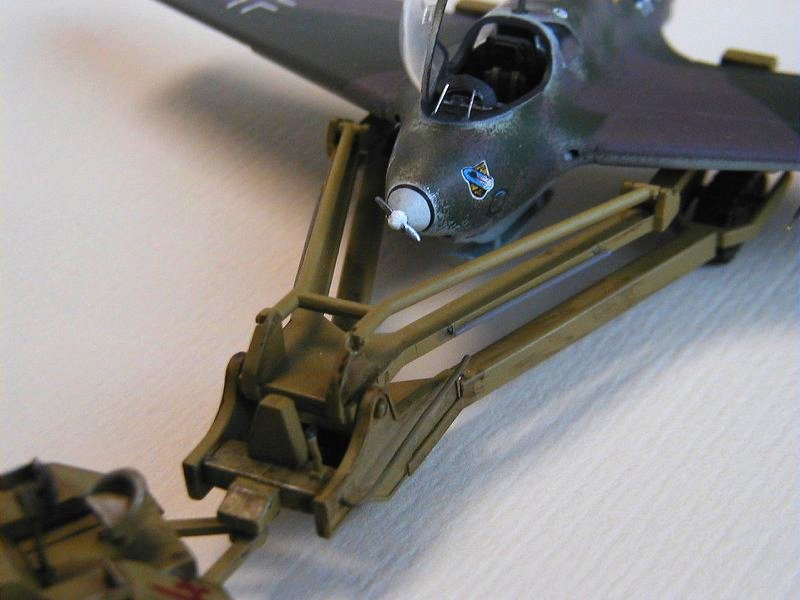 |
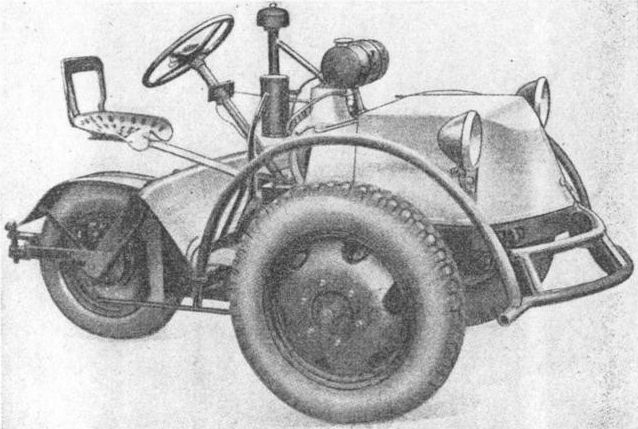 |
| three-wheeled tractor Scheuch-Schlepper Trailor |
three-wheeled tractor Scheuch-Schlepper |
After landing Me 163 unpowered and lacked wheels had to be retrieved by an adapted tractor-like vehicle, Me 163 A originally used for agricultural towing with a special trailer with twin trailing lifting arms.
And we could know that Me163 has a limited onboard ammunition ( 60 rounds per cannon)
After all development of an operational version was given the highest priority and the decision to create Me 163 squadrons all over Germany in 40 km rings was taken
As Messerschmitt was completely overloaded with production of the Bf 109 and attempts to bring the Me 210 into service production was then subcontracted to a number of component manufacturers and the aircraft were assembled in the Black Forest by Klemm Technik GmbH, although again, there were many problems as the component manufacturers were unused to the close tolerance work that was required so considerable redesign had to take place however, before the production version (Me163B Komet) flew .And in many German designs of WW2 parts of the airframe especially wings were made of wood, which allowed furniture manufacturers to act as subcontractors.
Six prototypes and seventy production models were ordered, but there was trouble with the rocket motor.
Me 163 B
.jpg) |
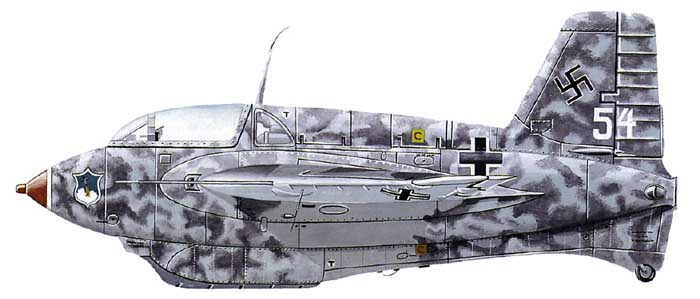 |
| Me 163 b Major Spatte |
Me 163 b |
Meanwhile Walter had started work on the newer engine the HWK 109 509, using C Stoff (f Hydrazine hydrate added with methanol ) This resulted in the significantly modified Me 163 B of late 1941. But the Hydrazine hydrate was also used for V1 and there is problem of supply and this fuel system was particularly troublesome, Both fuel and oxidizer were toxic and required extreme care when loading in the airframe and the pilots could have special protective gear
After two prototypes the production follow with 30 Me 163B-0 t armed with two MG 151 /20 cannon and 400 Me 163B-1s armed with two MK 108 cannon,
Only one Me 163 (V10) was tested with the BMW P3330A rocket engine
Me 163B receive modification especially for landing ( integrate landing edge slots)
He was always very delicate to drive especially during the takeoff one when he had to attain the speed of 130 km/h which the aerodynamic controls become effective
The performance of the Me 163 exceeded all of contemporary piston engine fighters.
At a speed of over 320 km/h the aircraft would take off, in a so-called "sharp start" from the ground, from its two-wheeled dolly. The aircraft would be kept at low altitude until the best climbing speed of around 680 km/h was reached, at which point it would jettison the dolly, pull up into a 70° angle of climb, and rapidly climb to the bombers' altitude. It could go even higher if need be, reaching 12,000 m in an unheard-of three minute After he quickly accelerate to speeds around 880 km/h where none allied fighter could hope to match
Me 163 S
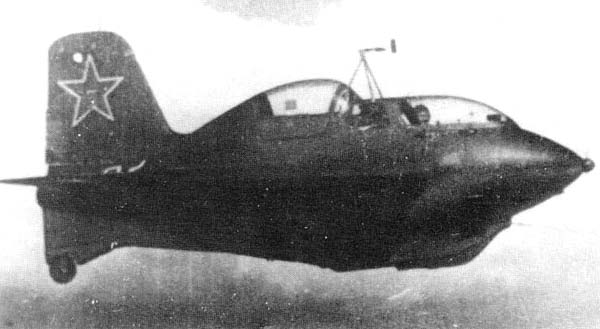 |
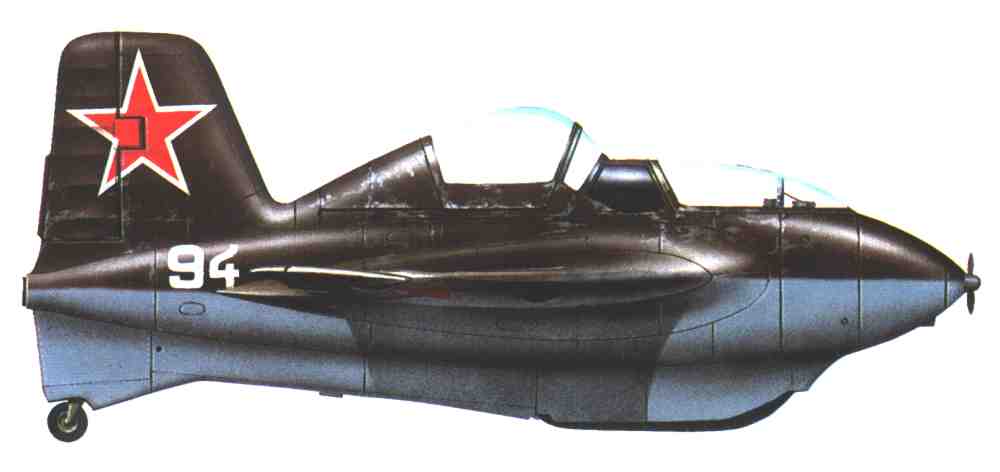 |
| Me 163 S (USSR utilisation ) |
Me 163 S (USSR utilisation ) |
For training purposes older Me 163A and first Me 163B prototypes were used.
But it was planned a Me 163 S, where he was removed the rocket engine and tank capacity and placed a second seat for the instructor behind the pilot. The 163 S would be used for glider landing training, which as explained above, was essential to operate the Me 163. It appears the 163 Ss were converted from the earlier Me 163B series prototypes.
Production of the Me163B-1a ceased in February 1945 after almost 400 aircraft were built.
Me 163 C
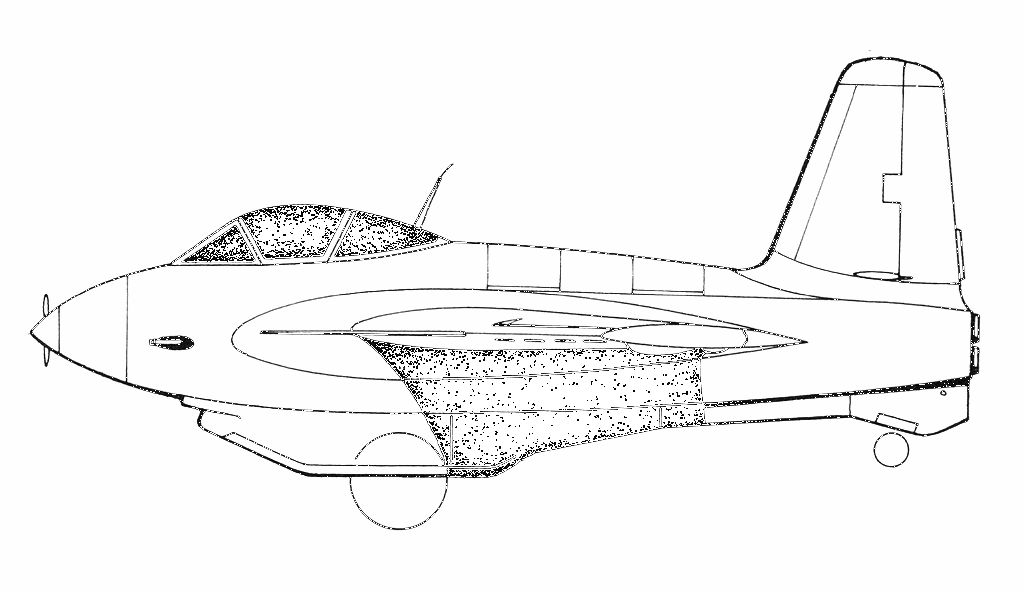 |
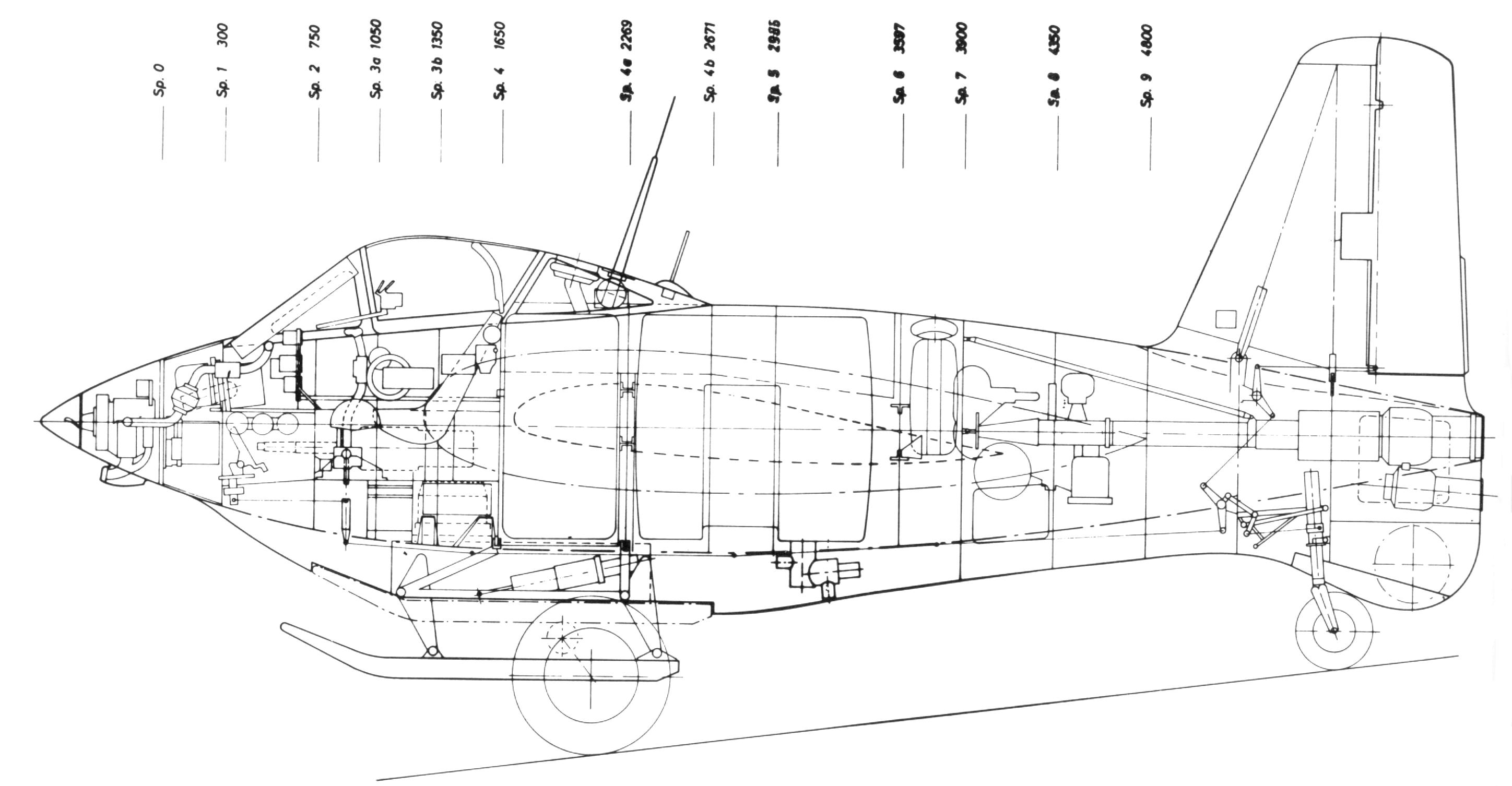 |
It is a redesign of the Me163B to incorporate the new engine, as well as fix other problems.
larger wing insert at the wing root, an extended fuselage with extra tank capacity through the addition of a "plug" insert behind the wing, and a new pressurized cockpit topped with a bubble canopy giving dramatically improved visibility.
The additional tank capacity and cockpit pressurization allowed the maximum altitude to increase to 16,000 m, as well as improving powered time to about twelve minutes, almost doubling combat time
Three Me 163C-1a prototypes were planned, but it appears only one was flown, and that without its intended engine
Me 163D.or Ju 284
It is a new design effort under the direction of Heinrich Hertel to improve the Komet.
Hertel team had to compete with the Lippisch team and their Me 163C. Hertel investigated the Me 163 and found it was not well suited for mass production and not optimized as a fighter aircraft, with the most glaring deficiency being the lack of a retractable landing gear of any sort.
For this the Me 163V-18 was equipped with a non-retractable tricycle landing gear.
The resulting used a three-section fuselage to ease construction.
The V1 prototype was completed for testing in August 1944, and was glider tested behind a Ju 188. Some sources state that the Walter 109-509 C engine was fitted in September, but it was probably never tested under this power. At this point the RLM re-assigned the project to Messerschmitt, where it became the Me 263.
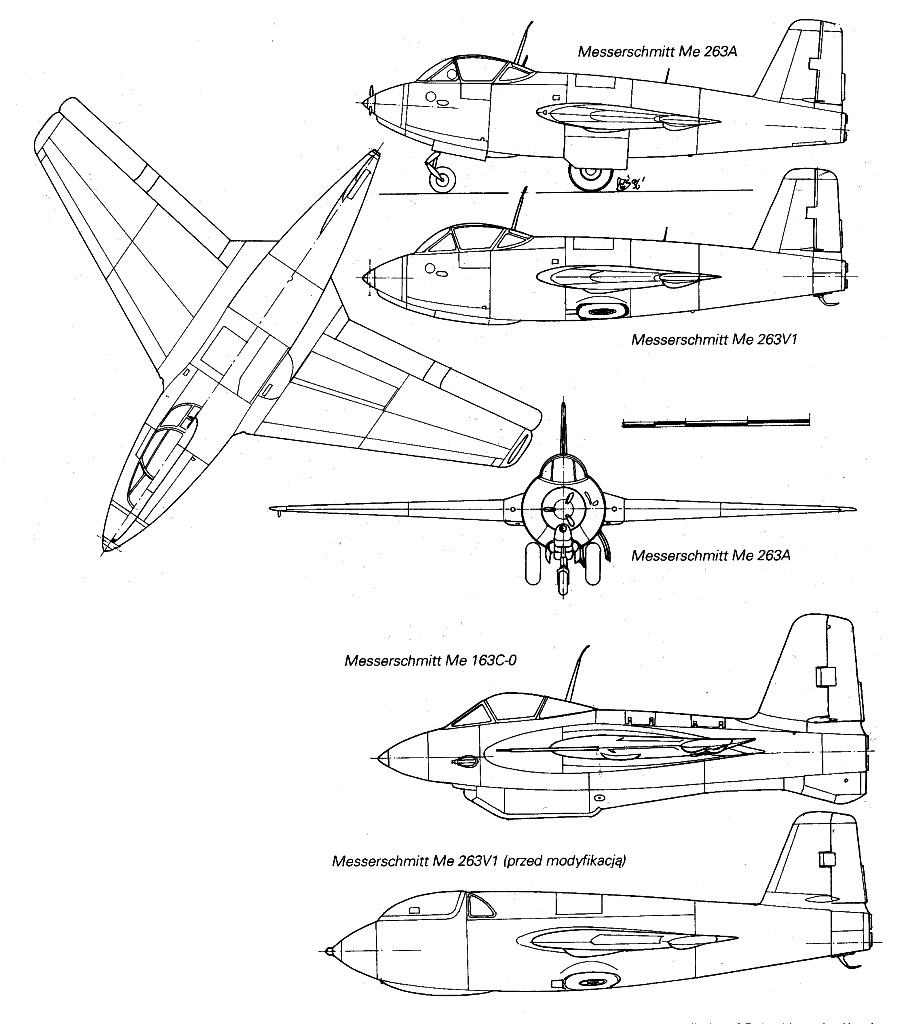 |
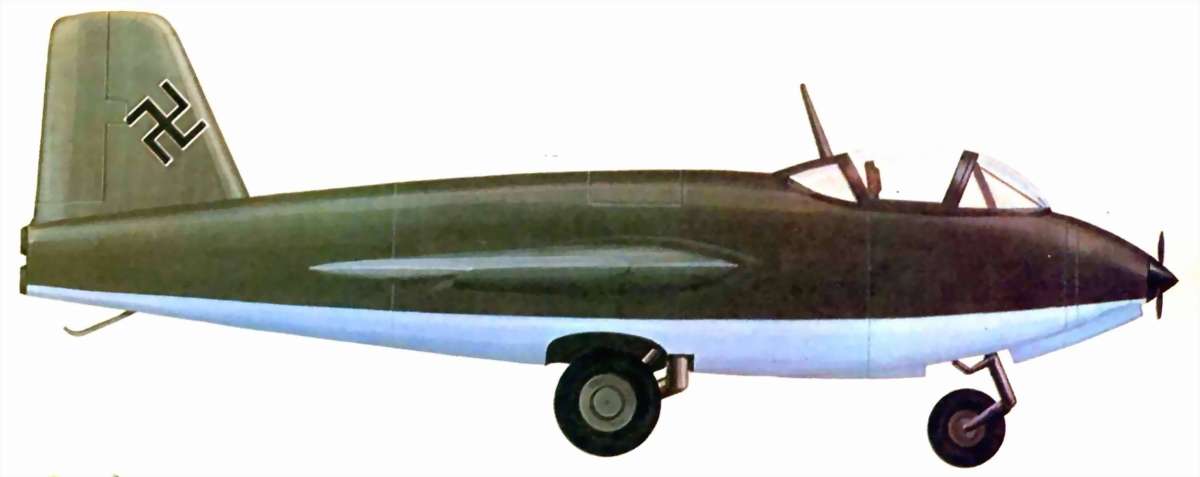 |
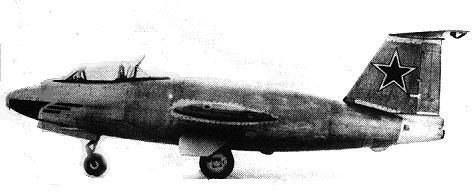 |
| Me263 |
MiG I 270 |
But he was never go into production, and he reborn in Soviet hand as MiG I 270
Mitsubishi J8M Shūsui
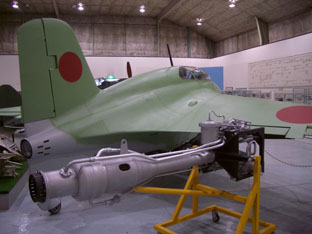 |
| Mitsubishi J8M Shūsui (Internet ) |
a licence-built copy of the Messerschmitt Me 163 Komet. The first broken-down aircraft and engine were sent to, Japan in early 1944. By the Japanese submarine was sunk in the mid-Atlantic on may 1944
Other plans s and engines were sent with Japanese submarine I 29 from Lorient to Singapore in spring 1944 Bthe I 29 was sank in July 1944. A copy of the Me 163 basic instructional manual was flown to Japan
Mitsubishi Nissan and Fuji proceeded with development of the airframe and Yokosuka Arsenal was adapting the engine for Japanese production, designated the Ro.2.
Japanese succeeded in producing prototypes that outwardly looked very much similar to the Komet.
The J8M1 had a wet weight of 410 kg lighter, the aircraft having a plywood main spar and wooden vertical tail. The designers had also dispensed with the armored glass in the cockpit and the aircraft carried less ammunition and slightly less fuel
Ki-200 and the J8M1 differed only in minor items, but the most obvious difference was the JAAF's Ki-200 was armed with two Ho-105 30 mm cannon (with a rate of fire of 450 rounds per minute and a muzzle velocity of 2,350 ft (720 m) per second), while the J8M1 was armed with two Type 5 30 mm cannon (rate of fire 400 rounds per minute, muzzle velocity 2,460 ft (750 m) per second). The Ho-105 was the lighter of the two and both offered a higher velocity than the MK 108 cannon of the Me 163 (whose muzzle velocity was 1,705 ft (520 m) per second).
The Toko Ro.2 (KR10) rocket motor did not offer the same thrust rating as the original, and Mitsubishi calculated that the lighter weight of the J8M1 would not offset this. Performance would not be good as that of the Komet, but was still substantial.
Engine still used the same German propellants known in Japan as Ko and Otsu
A total of 60 of the training version (Ku-13, Ki-13, MXY-8, MXY-9) were produced
Seven of the operational version (J8M1/Ki-200) were built
Me 163 at war
nitial deliveries of the Me163B-1a began in May 1944 and the aircraft made it combat debut on 28 July 1944 when five Me163b from 1/JG400 attacked a formation of B-17s near Merseburg.
But for the pilot it is very difficult to aim their guns and consequently overshooting the target although Me 163 was a stable gun platform
It required an excellent marksmanship to bring down an enemy bomber because he has a tremendous speed and climb rate so he reach the target quickly and passed it in a matter of seconds And where his another problem du to the speed of the Me 163 around 900kph and the speed of the bombers moving at 402kph,
It is hard for the pilot to fire with MK108 cannon.
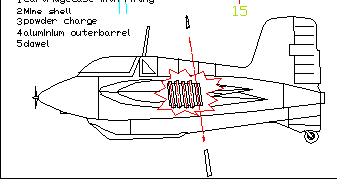 |
| SG500 Jagdfaust, |
An alternate weapon therefore had to be found. In fact the SG500 Jagdfaust, which consisted of five vertically mounted firing tubes mounted in each wing root pointing upwards, each containing a 50mm shell. The system fired a salvo when a shadow passed over a light-sensitive cell and so the Me163 just had to fly at high speed underneath a target for the system to be activated.
The system was fitted to twelve Me163Bs It appears that this weapon was used in combat only once, resulting in the destruction of a Halifax bomber.
Figth tactics
After the initial combats when German found that Me 163 approached a flight of B-17 Flying Formations too fast, Me 163 could conduct a more controlled approach through two or three dives at the bomber formations, utilizing gravity and drag in the process.
Score for the Me 163 Komet was credited of 9 B-17
The Japan tried unsuccessfully to procure the design from Germany when one of two subs transferring the Me 163 plans was sunk by Allied ships.
The Japanese did, in fact, develop their own working variant of the Me 163 the Mitsubishi J8M Shūsui 三菱 J8M 秋水, literally "Autumn Water"
was intended to be a license-built copy of the Messerschmitt Me 163 Komet. 7 were Built
1 his now in a US Museum and another in Japan
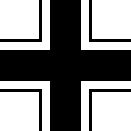 |
.jpg) |
| Germany |
Japan |
Specifications
Type: single-seat fighter / interceptor;
Crew 1
Weight 1,905kg (empty), 4,110kg (maximum take-off);
Length 5.84m
Wing span 9.32m
Height 2.77m
Wing area 18.5m.sq
Engine 1 x 3,750lbs (1,700kg) thrust Walter HWK 509A-2 bi-fuel rocket motor;
Performance 960kph at 32,810ft
Service ceiling 3 minutes 30 seconds (time to ceiling), 7 minutes 30 seconds (maximum powered endurance);
Armament: 2 x 20mm MG151 cannon or 2 x 30mm MK108 cannon in the wing roots;
Walk around HERE






.jpg)

.png)




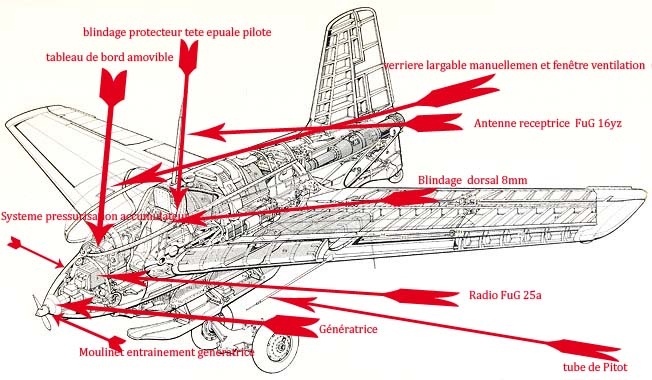
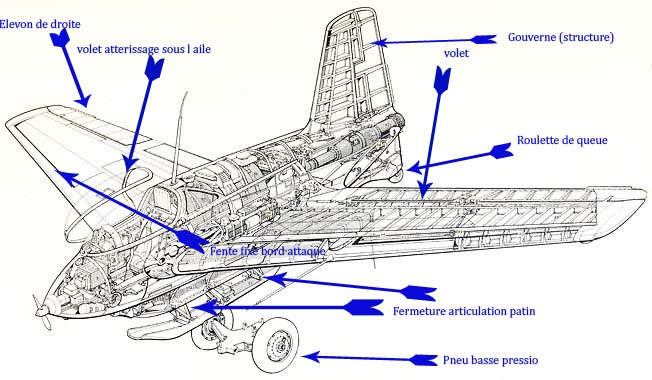
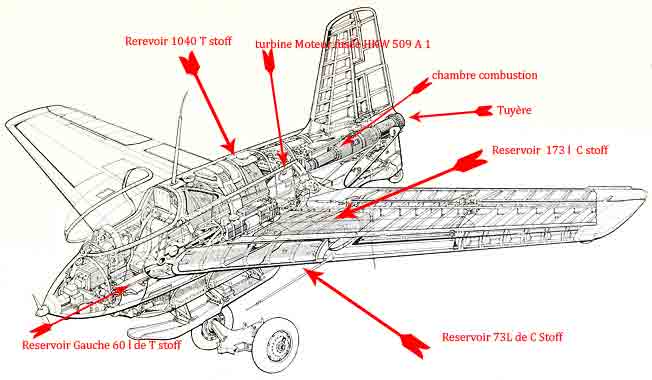

.jpg)
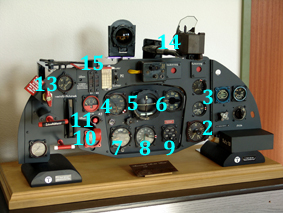
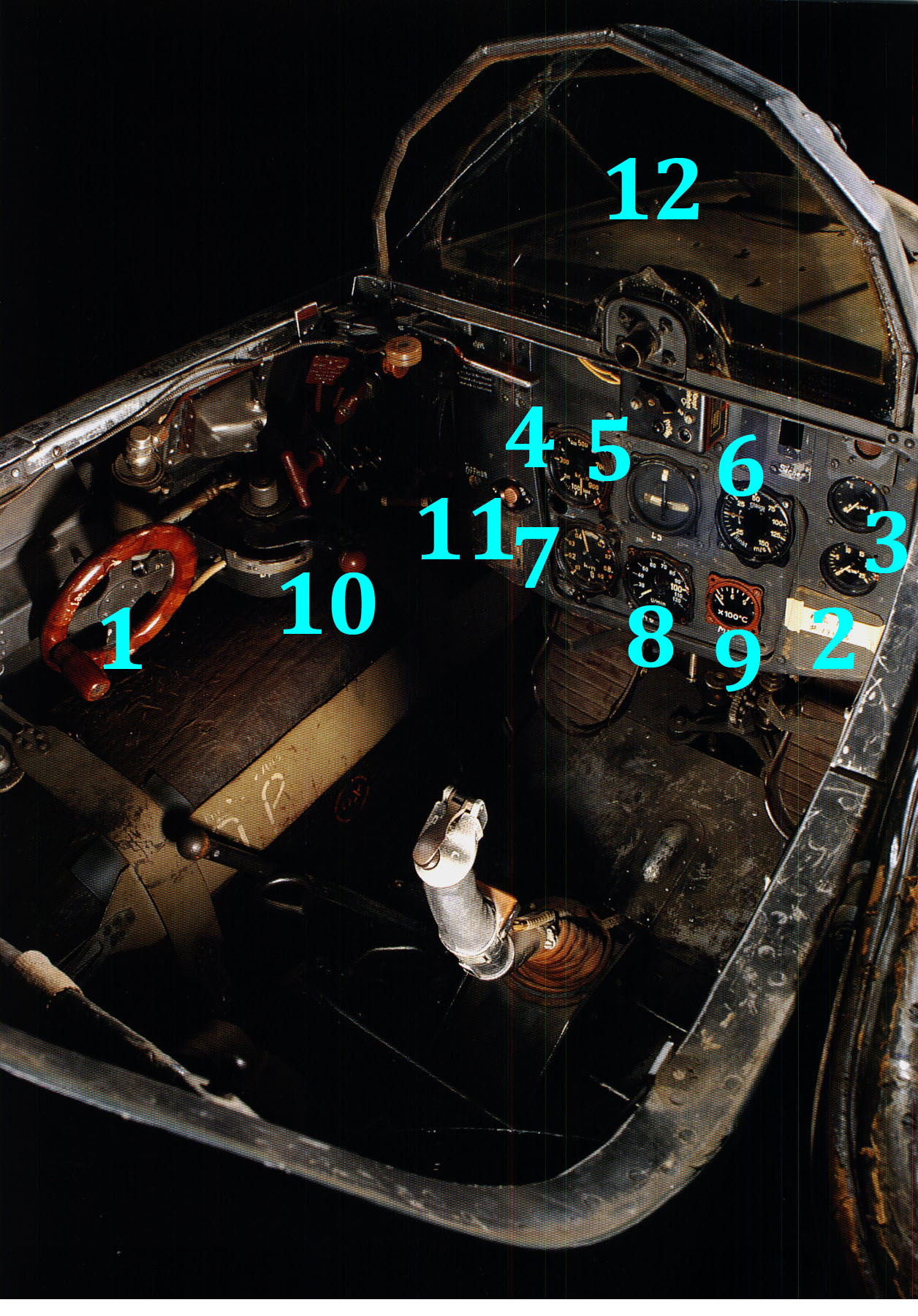
.jpg)
.jpg)






.jpg)









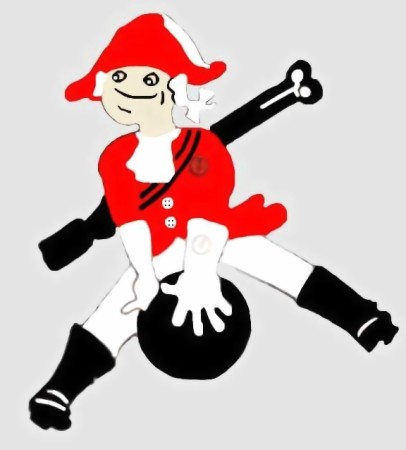
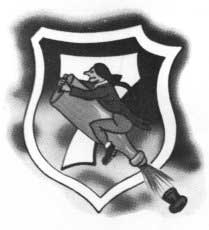
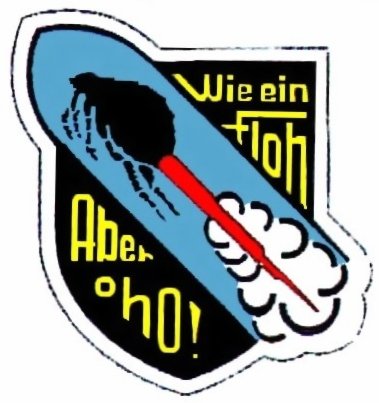
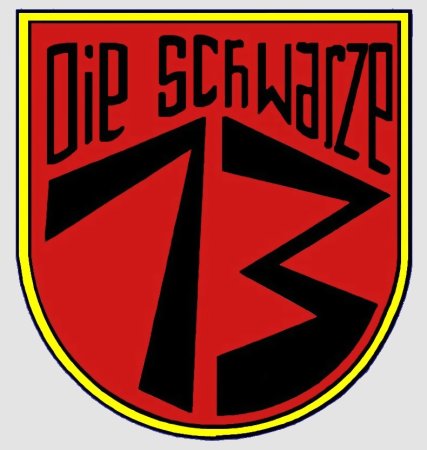
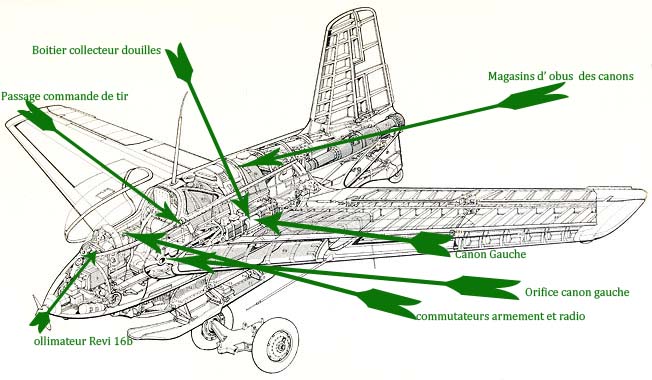


.jpg)